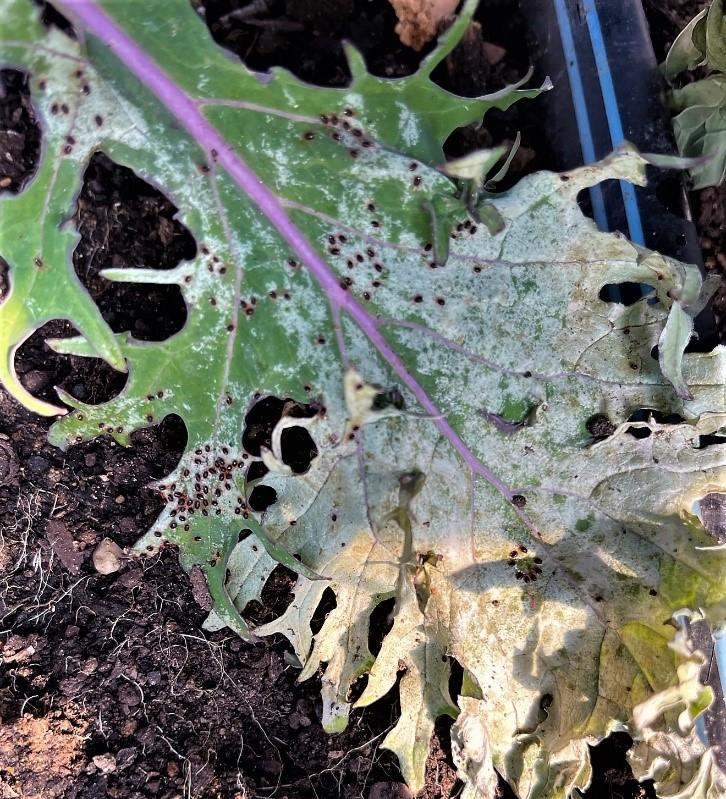Red legged winter mites causing damage to leafy greens in high tunnels now
The red legged winter mite, Penthaleus dorsalis has been found in the last few weeks causing damage in high tunnels (HTs) growing leafy greens. These reports have been from Maryland, New Jersey, Pennsylvania, New York and Connecticut.

Photo: Photo: Jerry Brust, UME


Red legged winter mites are very small with dark purple/black bodies and bright red legs (fig. 1). They thrive in what we would normally consider conditions too cold for an arthropod to cause problems. This mite is cold adjusted and cannot stand hot dry soil conditions and will die as summer heat approaches. Eggs are laid in late spring and over-summer in the soil. These are stress resistant eggs (i.e., they withstand drying and heat as well as synthetic chemical applications, but not steam applications). In the fall they will begin to hatch and mites will be active throughout the fall and winter inside a high tunnel with crops. Damage appears as 'silvering' or 'whitening' of the fed upon foliage (fig. 2). Mites are most damaging to newly emerging crops, greatly reducing seedling survival and development, but they also can make larger plants unmarketable.
I think the red legged winter mite is more of a problem now because we have many more high tunnels that are producing winter vegetables and because our winters are not as cold as they once were. In addition, growers have a problem detecting the little pests until it is too late and the reasons for this are several. First the mites are very small and it takes many mites to damage a crop, so their numbers can slowly build over time. The mites also are most active in the evening and overnight, come morning and the high tunnel begins to heat up the mites tend to stay under the foliage of plants in contact with the cool moist soil and can go unnoticed. Another problem is the damage that mites do on plants early-on looks very much like cold damage. Figure 3 shows cold damage to plants that looks similar to mite feeding damage (fig. 4). So, growers think the whitening damage they are seeing on their plants is from cold exposure and not mite feeding.
Red legged winter mites are difficult to control even when using synthetic chemicals. Foliar sprays of Pyrethroids (check label for the particular crops that are labeled as this will vary greatly) or Entrust (spinosad) combined with neem or some other hort oil will reduce feeding, but if mite populations are high it will be difficult to eliminate the damage. This is usually the case when growers contact me, their mite populations are very high and little can be done at the time for control. Applications should start as soon as damage is noticed before mites have a chance to build their population. Foliage should be thoroughly covered with spray material as should soil around the base of plants.
Cultural controls involve using high levels of heat such as clear plastic mulch that is used to heat the soil and kill mites and if used in the summer even their eggs. Steam heat used to control nematodes, soil pathogens and weed seeds can be used to greatly reduce mite numbers before the next planting. Many cultivations during the summer can significantly decrease the number of over-summering eggs that survive. During the winter growing season once a crop is done it may be possible to take out all the green material in a high tunnel wet the ground and place leaves of mustard greens on the soil as a way to bring the mites to the surface to feed, then use a propane torch to burn the leaves and the mites at the same time- this method is being trialed now to see if it helps. The growers at ECOCity Farms have reported that the red legged winter mite’s most preferred crops are purple mustards, mustard greens, Pac Choi and salanova with spinach, red Russian kale, collard greens, arugula and cilantro being moderately preferred.
